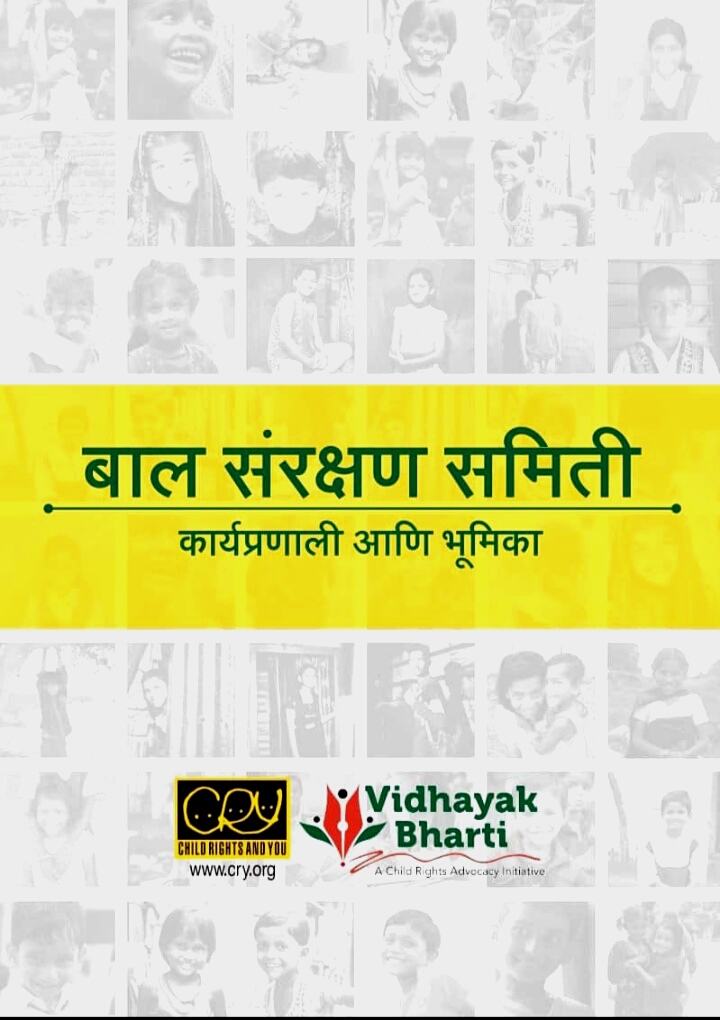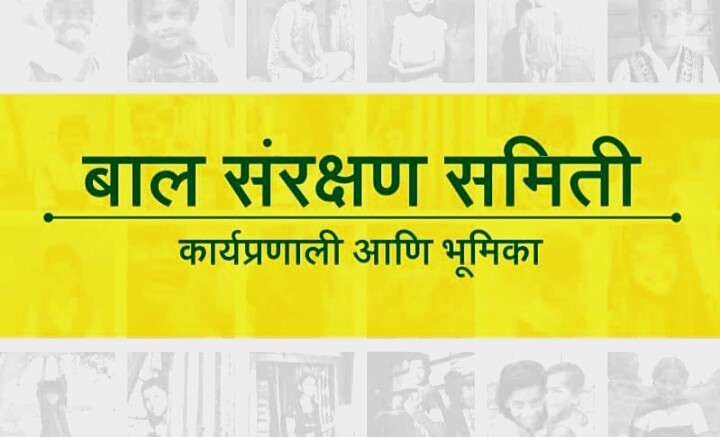CRY-Child Rights and You release ‘handbook on roles and responsibilities of Bal Sanrakshan Samitis’ and ways to tackle child protection issues at the community level.
MUMBAI, JULY 21, 2020 (GPN): With an aim to address the severe issues of child protection in both rural and urban areas and also highlight the important role of child protection committees at these levels, national child rights NGO, CRY-Child Rights and You along with its NGO partner Vidhayak Bharti launched the handbook Bal Sanrakshan Samiti on July 21, 2020 over a webinar in Mumbai. A useful tool, the handbook can be used widely and referred to by NGOs, District Child Protection Cells, Child Welfare Committees, Police, Teachers, Anganwadi Workers, Corporators and Child Protection Committees.

CRY-Child Rights and You release ‘handbook on roles and responsibilities of Bal Sanrakshan Samitis’ and child protection issues
The launch was presided by Seema Vyas, Secretary, State Commission for the Protection of Child Rights (SCPCR), Mr. Pravin Ghuge, Ex-Chairperson (SCPCR), Mr. Rahul More, Deputy Commissioner, DWCD (Konkan Division), Ms. Manisha Biraris, Programme Manager, State Child Protection Society, GoM and Ms. Kreeanne Rabadi, Regional Director, CRY-Child Rights and You (West).
The event was moderated by Mr. Kumar Nilendu, General Manager, Development Support, CRY-West.
The handbook also includes a step-by-step guide on providing information on how child protection committees should function at the village and ward level. The booklet is written in easy-to-read Marathi language and is a useful guide for all stakeholders to refer to from time to time.
The discussion also focussed on the future of CPCS and to make them more action oriented. Rahul More, Deputy Commissioner, DWCD (Konkan Division) said that the implementation will definitely pick up with joint efforts. Participants believed that the handbook will play a crucial role in strengthening the CPCs already in place and help in empowering the ones struggling with limitations.
The present ongoing pandemic has triggered unprecedented global health, humanitarian, socio-economic crisis, exacerbating the vulnerabilities of children. The collateral negative impact of COVID-19 is considerable like loss of livelihood at the household level (even if temporary) can lead to devastating effects on children, particularly those living in poor households with limited assets. Furthermore reduced household income has forced poor families to cut back on essential health and food expenditures. The potential losses that may accrue because of the discontinuity of school education too are (not) hard to measure. Unfortunately in the prolonged lockdowns, incidences of child abuse and violence are likely to increase and children and adults are rarely in a position to report such acts. Yet, at a time of increased need, children no longer have the same access to a safe space like schools and teachers to possibly seek support and report incidents from home while community-based mechanisms and related child protection structures are not being sufficiently resourced and prioritised. Children’s reliance on online platforms for distance learning has also increased their risk of exposure to inappropriate content and online abuse. Just as the combined effect of school closures and economic distress is likely to force some children to drop out of school, the same combination can be expected to compel children into child labour.
Hence there is a need to prioritize the continuity of community-based child protection mechanism to ensure equity of access – particularly in relation to schooling, nutrition programmes, immunization with a primary focus on child protection.
Village and Ward level child protection committees can play an important role in raising awareness and protecting children. Members can support in developing child-friendly messages on COVID-19 and associated risks and referral systems. Committee members can carry out activities to end stigmatization, promote safe coping mechanisms, and support affected children and families developing their resilience.
Why this Handbook
Grassroots experience of CRY and its implementing partners over the years while working closely with the Integrated Child Protection Scheme (ICPS) structures in both urban and rural areas, observed that there have been gaps related to training needs, budgetary allocations and effective redressal mechanism both at the community level and also at the level of service providers like ICDS workers, PRI representatives, local body members and representatives of various government departments who are the main pillars of Village/Ward level CPCs. The handbook discusses the arrangements to be made for child protection at state and district level and informs why Child Protection Committees play a key role in preventing and responding to any incidents of child marriage, child labour or exploitation of children.
“CRY has published this book with support from Vidhayak Bharti in a very simple language. Through the Child Protection Committee, we can work more consciously from the point of view of child safety at the village and ward level. This book is useful for all those who have taken an initiative to protect children,” says Seema Vyas, Secretary, State Commission for the Protection of Child Rights (SCPCR).
“Child protection is one of the many issues which CRY has been consistently working towards for the last 40 years. CRY has always advocated better implementation of child protection policies at the grassroots both in rural and urban India. This handbook is yet another step further in this direction,” says Kreeanne Rabadi, Regional Director, CRY-West
Santosh Shinde, Founder, Vidhayak Bharti cites that the handbook hopes to be a guide for CPCs to function effectively. “CPCs are mandatory by law and hopefully this handbook will help child protection committee members in highlighting and tackling various issues like harm, harassment and neglect of children in an effective manner.”
“I congratulate CRY and Vidhyak Bharti for this wonderful initiative. The handbook will help all CPCs in working better and in a more effective manner. This book is not just theoretical in its approach. It is more than that. Due to the situation the world is facing today we are standing at crucial crossroads and need to take that into account and make our child protection committees stronger not only in cities but across our villages as well,” says Pravin Ghughe, ex-Chairperson, SCPCR. ENDS


Be the first to comment on "CRY-Child Rights and You launches Publication to address role of Child Protection Committees and ensure better safety of children released"